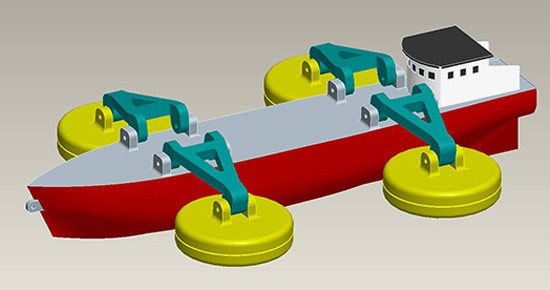
Ship-based system designed to harness energy from waves
Traditional wave-power systems, both actual and proposed, are typically permanently located out at sea. Because of this fact, they must be designed to withstand storms. They are also required to send the power that they generate back to shore via underwater cables, which can be very costly to purchase and install. Additionally, because they are permanent structures, they must meet regulatory standards and can’t be located anywhere that ships might run into them.

The Fraunhofer system would apparently have none of these problems. It would consist of floating buoys, that would be deployed over the sides of a 50 meter (164 foot)-long ship, on hinged arms. As those buoys proceeded to bob up and down on the waves, the arms to which they were attached would pivot up and down, generating power that would be stored on an onboard battery system. One the ship was ashore, power from those batteries could then be released into the municipal grid system, during hours of peak usage.
Because the system would be mobile (the buoys would be lifted out of the water when the ship was moving), everything could simply be taken to shore when storms were approaching. No cables would be required, and the system could be temporarily parked wherever it didn’t pose a hazard and the waves were decent.

The ships, which could be repurposed existing vessels, would have a storage capacity of 20 megawatt-hours. It is estimated that the system could generate electricity at a cost of 15 cents per kilowatt-hour, which is lower than the cost of existing wave power systems, that reportedly range between 30 and 65 cents.
Of course, some energy would be expended to power the ships’ engines, or the engines of tug boats that would tow them.
July 22, 2011
